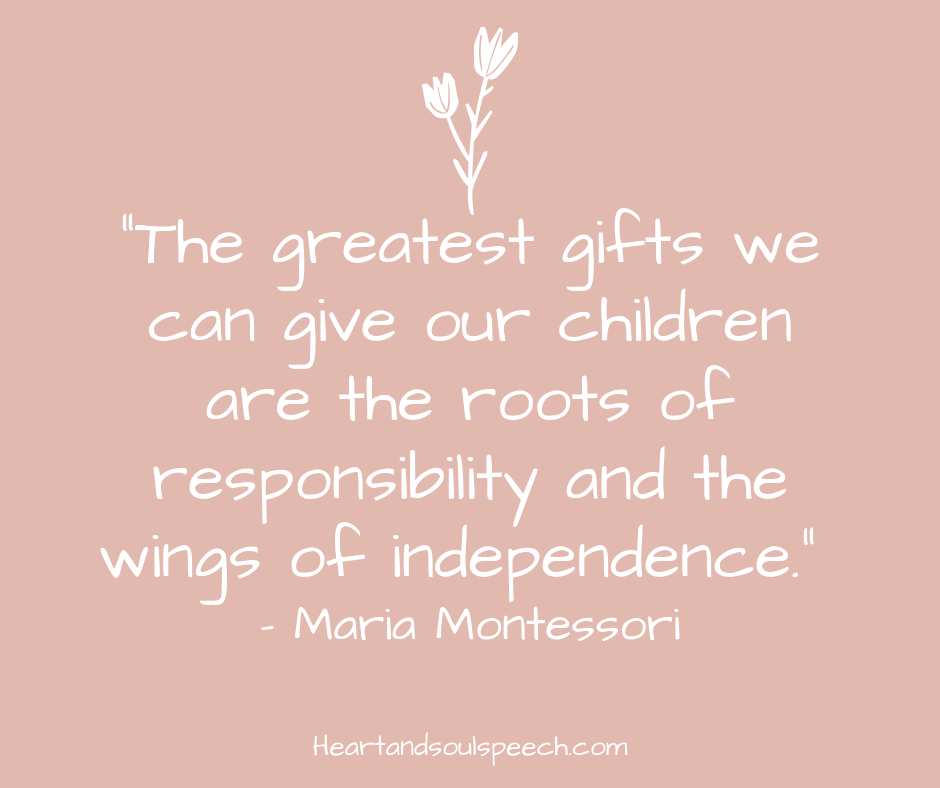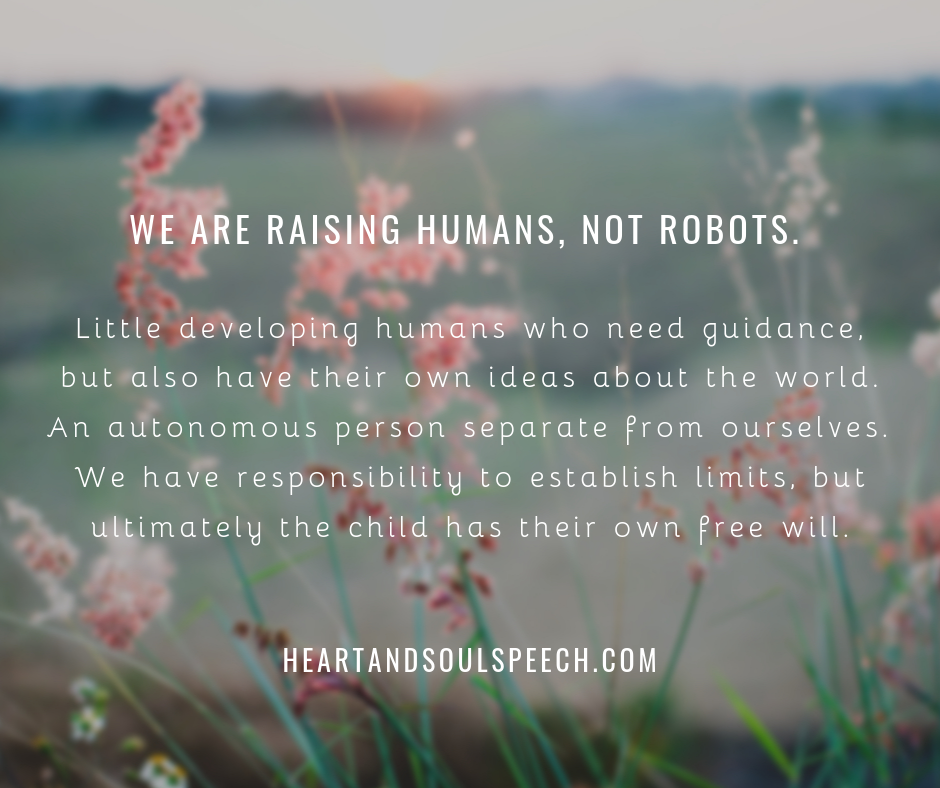When it comes to power struggles between caregivers and children, I’ve been looking for answers like many parents. Much of my research includes recommendations like:
- “Stay strong and be firm. You are the boss.”
- “You just have to be consistent. Children need to respect you.”
- “Stand your ground. Don’t give in or they will take advantage of you.”
Timeout. Punishment. Scolding. I’ve tried it and it hasn’t really worked in my own parenting. It just doesn’t feel right to me. I know my child is struggling and shutting them out isn’t the answer for me. Anyone else feel the same?
While traditional parenting theories support comments like these, practicing Positive Discipline is another way to solve challenging behaviors, and may be more effective in changing children’s behavior. When it comes to power struggles, everyone is fighting to be the “boss.” In the end, there is no true winner.
The Garden of Parenting
Think about your lawn. Think about all it requires to grow, flourish, and be beautiful—mowing, fertilizing, pruning weeds, water, dirt, and sun. It’s hard work. But you can’t keep the top pretty and green unless you’ve got healthy roots.
Parenting is the same. Challenging behaviors are the weeds in your child’s beautiful garden. They will grow until you get to the “root” of the problem. You can mow over the weeds and they may go away for a while. Although, an expert gardener knows picking weeds by the root will result in long-term change, even if more time-consuming.

Yes, weeds will still happen.
Think about the last tantrum YOU had. One time I threw a fit because my mashed potatoes came out lumpy. Y’all, I cried on the kitchen floor. My husband was about ready to annul our marriage based on insanity.
Of course, we aren’t going to create a perfectly cooperative child. We aren’t going to eliminate challenging behaviors forever. Even adults have tough days. So, what can we do? Treat the root of the problem by connecting and communicating respectfully with our child.
Getting to the Root of the Behavior
“Please get your shoes on. It’s time to go.” My two-year-old looked me in the eyes frowning and said, “I me grapes.”
“We can have grapes when we get home. Do you want to get your shoes or do you need help?”
Opening the fridge defiantly, “I me grapes!”
Sigh. “Not right now.”
He throws his head back, lays limp on the floor, and screams. I feel my patience disappear and frustration take over. A quick thought floods my mind, “He’s testing me! I can’t let him get away with this!” He’s still screaming. Realizing I’m arguing with an irrational toddler and am already running late, I throw a few grapes in a bowl and grab his shoes. He gets up and follows me to the door like nothing ever happened with a smug smile. I feel defeated and like I just reinforced his “bad behavior.”
I’m still learning: Behavior is communication. I know lecturing and punishing him would’ve only prolonged the power struggle. He would still be crying. I probably would’ve started crying. And we would’ve been even later to our appointment.
Later in the car trying to calm myself down, I realize what I should’ve already known…he was just trying to tell me he was hungry. I was too involved in my own agenda to recognize he needed a snack. The true root of the behavior. When I pause to analyze the reasonfor the behavior, I can better pluck at the roots of the problem. This allows me to respond with empathy and effective communication.
Wendy Bertagnole, author of Taming Tantrums describes two different ways caregivers can view behavior:
Triggers, or actions we see that may miss the root of the problem, such as:
- Being told “no” resulting in a tantrum (to gain more attention)
- Running away at the park when it’s time to leave (escaping the situation)
- Refusing to get ready for bed so they can play more (power struggle to get something they want)
- Escaping the dinner table to avoid a particular food (reacting to a sensory experience)
Digging deeper for the “why” at the root of the problem and meets their needs, such as:
- Need for power or independence (Given a choice between two acceptable options.)
- Need for predictability and expectations (Being given a five-minute warning before leaving the park.)
- Lacking problem-solving skills and/or emotional development (Empathizing with your child about being sad playtime is over.)
- Need to regulate sensory system (Understanding your child’s response to new foods and encouraging them to learn more without expecting them to take a bite.)
Recognizing the Power Children Need, Within the Limits We Set
As children develop, they need to experiment with more independence, power, and control over their world. All humans, even tiny humans, are biologically wired for this! Literally, our genetic makeup is wired to fight back when we feel out of control.
Young children have very little say over their daily lives. Often, we decide what they wear, what to eat, when to sleep, when to play. We control all the power. It’s only natural they feel out of control and powerless. Their reaction is to immediately play emotional defense. We fight harder to control, and they fight harder in defiance. It’s the never-ending cycle of power to control another person. Finding the balance between the power of the parent and the power of the child, while still maintaining parental boundaries, is where peace will be.
Many parents may worry giving children so much “freedom” is too much. Cynthia Tobias, author of You Can’t Make Me But I Can Be Persuaded suggests parents can set the expectation and then allow the child freedom in how they can make that happen. Essentially, caregivers have the power to decide “where to go” and children have the power to decide “how to get there.”
Sharing Power and Respecting Free Will
By being respectful of our child’s emerging sense of self, we give them some power. The power to express themselves. Power to problem-solve. To make decisions. To have different opinions than our own. We have responsibility to establish rules and limits, but ultimately the child has their own free will.

In the moment of a power struggle, ask yourself these three questions:
-
Why is the battle happening? (Think back to the root of the behavior.)
-
Is the battle worth it? (Set aside your pride and power for a moment.)
-
How can I share the power with my child? (Set the expectation, then allow the child to make it happen within your limits.)
Instead of choosing their outfit for the day, perhaps we let them choose between two shirts. (Or so what, if they don’t want to wear a shirt around the house?)
Instead of expecting them to eat lunch when you do, pack it up until they get hungry. We can’t make them eat anyways!
If they refuse to nap, reinforce “quiet time” and guide them to choose a couple books to read alone in their room.
How do you manage power struggles?

One Response